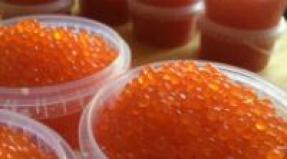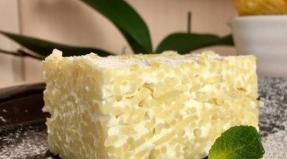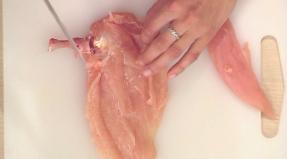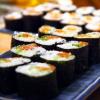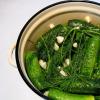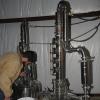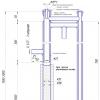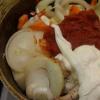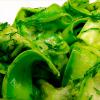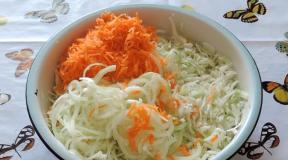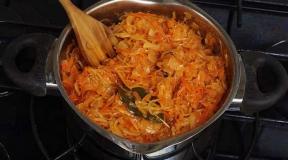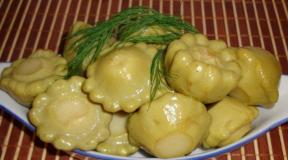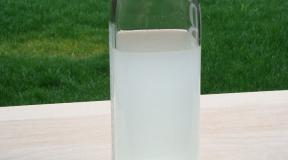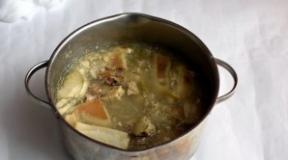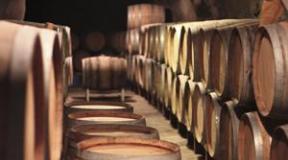Birch sap: how and when to collect it correctly. How to collect birch sap correctly? Where and at what time is it best to do this? The benefits and harms of such a drink
When daytime air temperatures in the forest begin to show positive values, it is time to collect birch sap. This is a unique product that we talked about in great detail in the article ". So many juice lovers and connoisseurs these days go to the forest and chop trees with an ax, cut the bark with a knife, drill holes in the trunks, hammer grooves, stick pipes, strings, grass and hoses into the tree, tie and substitute bottles and cans. When leaving, they close up the holes with earth, clay, moss, window putty, plasticine, and even fill them with vitriol. Many come to collect the juice without knowing the basic rules of this process at all and act by trial and error. Others in the question "how to collect birch sap?" rely on the experience of their friends, or, as is fashionable now, on the knowledge of the Internet.
But from the side of real professionals, all this violent activity looks like real vandalism and disgrace. And today I want to invite everyone who recognized themselves, their friends and relatives in the above-mentioned "professionals" in collecting birch sap to pay attention to the experience of specialists from Canada, where for several hundred years maple sap has been collected, but they do it with care, even with some reverence for those trees that give them their magical nectar!

How to get birch sap - a Canadian experience in Russian forests!
Looking ahead, I would like to say that Canadian farmers who extract juice from the maple groves cherished for centuries would be very unhappy with our Russian methods of sap extraction. But, unfortunately, even if you want to study their experience, then on the Internet you will not find the detailed and detailed experience of Canadians on how to collect birch sap, although we have a lot to learn from them.
In order to familiarize you with best practices, this article has collected the most important information on the most effective and long-lasting, non-damaging trees, methods of saping. In fact, this is a translation and concise presentation of several articles by Canadian specialists, instructions and regulations of the Canadian and American forest industry. I hope that the Canadian experience on the topic "how to collect birch sap?" will be useful, and will be applied in practice, and the old barbaric methods of extraction will forever become a thing of the past.
A few words about tree sap.
As in Canada, maples are the first to wake up in our Russian forests from hibernation in February-March, although there are still drifts of snow in the forest and it is very freezing at night.
The movement of sap in the trunk depends on the amount of moisture thawed out in the ground at the roots, as well as on the cycles of freezing and thawing of water in the wood of the trunk itself, which work as a kind of pump. The juice is most abundant on a warm sunny day after a clear frosty night.
It is important to know that the juice moves along a relatively thin conductive layer under the bark. In the center of the trunk, the wood is dry.

The movement of the sap ends a few weeks after the last severe frost, together with the swelling of the buds and the appearance of the first foliage. The pressure inside the trunk drops, and the juice stops dripping through the holes and cracks in the bark.
By the way, besides humans, tree sap is also mined by birds. Woodpeckers punch many small holes in the bark and drink the sap of maple, birch and other trees. Other birds also love to feast on the spring drink of a variety of trees. But people get almost exclusively only maple and birch sap.
Why did you choose maple and birch for collection?
The fact is that the movement of sap in maple and birch is more abundant compared to other trees. Maple sap contains 2 to 4% sugar and has a slightly woody flavor. Birch sap is less sweet, only about 1% sugar, and almost tasteless. The sap of different trees of the same species may taste different. And even the juice of one tree at different times and at different points of the trunk is also different. One of the main characteristics of the juice is its sweetness. The difference in sugar content between maple and birch sap is clearly visible when making the thick, sweet syrup, a traditional Canadian treat.
To make 1 liter of maple syrup, you need to evaporate 40 liters of Canadian sugar maple juice. Our European Norway maple produces less sweet sap. To obtain 1 liter of syrup, you need to evaporate about 50-60 liters (this produces a syrup that is in no way inferior in taste to the Canadian one). And to obtain 1 liter of birch syrup, from 80 to 100 liters of birch sap is required.
For information, I will add that maple sap, in addition to Canada, is massively mined in the northern states of the United States, and birch sap is collected industrially so far only in Alaska; in other regions it is harvested only for home use or as a small addition to the maple crop. In Russia, industrial harvesting of maple sap is impossible, and birch sap is not developed. And only in Belarus, the extraction of birch sap reaches an industrial scale, and forestry in the spring is busy collecting it.
How to choose a tree for sap collection?
Healthy mature trees provide sweet sap more abundantly. A thick straight trunk, a dense crown, many living branches and the absence of dry ones, free placement in a group of other trees indicate that the tree will give a lot of sap and withstand human intervention without harm to itself. With the correct collection of sap, such a tree will remain healthy, and its productivity will only increase from year to year.
A good tree on a warm sunny day can produce up to 8-9 liters of sap. And on a cloudy cold day, you may not get even 2 liters from the same tree. On average, for a season that lasts about 3-4 weeks, about 50 liters of sap is collected from one tree, birch or maple. Usually the maple season in central Russia starts at the end of February, the birch season at the end of March.
When and how to start collecting correctly?
On the southern slopes, well warmed up by the sun, the movement of sap begins earlier than in the depths of the forest, and here you can start tapping earlier.

The juice at the beginning of the season is the sweetest, although it comes in a small amount. But tapping at this time is possible only if you are going to complete the collection within a few days. Firstly, there is a danger of the return of constant frosts, in which case the flow of juice from the hole you made may completely stop, which is why you will have to make an additional hole in the trunk with the return of warm days (and this is extremely undesirable). Secondly, early and long-term collection of juice leads to a deterioration in the quality of the bulk of the liquid, the amount of sugar in it decreases and pollution increases. Therefore, if you plan to collect juice for a week or more, then you should start working only at the beginning of the abundant flow, determining it by one control tap.
An abundant flow is a collection of 4-5 liters of juice per day from one tree.
The sap will go first on the southern, sun-facing side of the trunk. But you should not rush and make a hole here. The high temperature will encourage bacteria and yeast to grow on the spout and in the juice container. It is better to wait for the juice to actively flow along the northern side of the trunk and make a hole there.
How to get birch sap without harm to trees ?! The main rules for correct tapping.
Tapping is a way to extract tree sap. Traditionally in Russia, the question of how to collect birch sap is solved by making cuts and notches on the bark.

In Canada, it is not practiced to strip trees with piercing and cutting objects. The extraction of tree sap there is carried out by drilling a hole and installing special equipment for collecting sap. All this has been worked out in Canada by thousands of farms for several centuries, and by now the most optimal tapping system has developed, which is equally suitable for maple and birch.
Correct tapping maximizes sap and minimizes both damage to the tree and microbial and fungal contamination of the hole and collected sap. You need to be able to tap the right trees at the right time in the right place on the trunk. At the same time, using the correct equipment and monitoring the sterility of the drill, spout and holes in the tree. You should also observe the holes for the appearance of contamination and infection, and do not leave open holes flowing with juice, clog them with a plug to prevent fungi, bacteria and insects from entering the tree.
The main tapping method is drilling. It should be understood that a non-sap-conducting area is always formed under the bark of the tree around the drilled hole (and any other damage to the trunk). This is how the tree reacts to the wound, fencing it off from the sap-carrying tissues with a scar of dry wood, which will never again be able to produce sap. This area has the shape of an ellipse, elongated vertically.

The loss of this area is gradually compensated by the growth of the tree and an increase in the diameter of its trunk. Conductive tissue grows in the area unaffected by taps, and thanks to this, it becomes possible to collect sap for many years without significant harm to the tree. But for this, taking care that the formation of scars does not overtake the growth of healthy wood, it is necessary to observe the correct tapping regime. And then, as the observations of scientists show, the tree will continue to grow and remain healthy.
To maintain the health of the tree, tapping should be done with moderation. In Russia, many people think that small trees, thanks to their youth, will give a lot of juice. But this is not the case. Small trees with a trunk diameter of less than 30 cm should not be tacked at all, as well as larger, unhealthy, oppressed trees. The collection of juice from them is scanty, and at the same time it kills the tree. Only mature, healthy trees can be trimmed. In trunks with a diameter of 30 to 45 cm, it is permissible to make only one hole during the harvesting season. For large maples over 45 cm in diameter and in good health, two holes can be made. Three tapping of one tree cannot be done, both due to the fact that too large an area of the wood is damaged, and because the crown will not take a significant amount of juice necessary for foliage. The latest regulation of the Canadian Forestry Department prohibits the third tapping, regardless of the health and size of the tree.
Even stricter rules apply to the question of how to collect birch sap. Since birches live less than maples, have thinner bark and less developed root systems, it is reasonable to assume that they are more susceptible to tapping damage. Therefore, you should never make more than one hole in a birch tree, and you need to choose large trees with a diameter of more than 20 cm.
It should be noted that the maple tree in the southern Canadian provinces is in the center of its range, and most of the trees are strong enough, healthy, and suitable for intensive sap collection. In Russia, in many areas, maple grows on the outskirts of its range, and therefore many trees are oppressed and cannot give a large amount of sap without harm to themselves. This should be taken into account when tapping. In this sense, birch has a much more favorable position in Russia. It occupies vast areas, grows almost everywhere, many trees are large and have excellent health. It is quite possible to collect birch sap from us intensively and at the same time it is safe for the trees themselves.
Another consideration in favor of moderate tapping of Russian maples and more active extraction of birch sap is the difference in the rate of regeneration of the stand. Maple forests, like oak and linden forests, are ancient forests. Once they stretched in a wide strip along the southern regions of central Russia. But all these thickets have long ago been brought down and plowed up, and there are very few areas of the original broad-leaved forest left.
In the place of fields, the first thing to do is to renew the birch forest. And if you suddenly cut it down, then young birches will again appear in its place. If you cut down the maples, then a young maple forest will not grow in their place. At first, the dominant position will be occupied by the same birch, since it is a pioneer species in our country.

And tens and even hundreds of years will pass before the natural process of replacing the stand will return oaks and maples to their original predominance in the forest. That is why maple groves are so valuable and need to be treated with care. Indeed, their restoration takes many years, in contrast to birch forests, which are quickly renewed.
When tapping birch and maple in Canada, holes with a diameter of 11 and 8 mm are used. The drill diameter depends on the chosen tactics. A deep hole with a large diameter leads to the formation of a large area of damage. The whole question is in the ratio of the volume of juice extraction and the degree of damage caused. The traditional 11 mm hole in a tree can extract 20% more sap from large trees compared to the new 8 mm hole. But when extracting juice from medium-sized trunks, an 8 mm hole, being half the size, gives almost the same volume of juice as 11 mm. At the same time, it tightens faster, and the affected area in the trunk turns out to be almost half the size.
It is interesting to note that when tapping maple with two 8 mm holes, the sap collection increases by 50%, which is more than from one 11 mm hole. At the same time, due to the small diameter and small drilling depth, the damage to the barrel with double tapping of 8 mm turns out to be similar to drilling one 11 mm hole. In Canada, many farmers are switching to the use of 8 mm holes, abandoning the traditional 11 mm, despite the fact that the latter also allowed many years of sap collection without much harm to large healthy trees.
For the "home" collection of juice for one family, tapping with a small diameter of 8 mm is certainly more suitable.
Following these principles - the minimum number of holes of the minimum diameter and minimum depth while maintaining sufficient production volumes, allows the tree to grow the sap-conducting area faster than it is lost during tapping, which allows for a sustainable long-term collection of sap.
Birch is an extraordinary tree that cannot be confused with any other. Since ancient times, the people of Russia have composed songs, sayings and proverbs about birch, admired its beauty and gratefully accepted its laras: wood, tar, birch bark, as well as natural birch sap - an excellent healthy refreshing drink. Birch sap is transparent and only slightly sweet in taste, despite its sugar content of about 2%. This environmentally friendly drink is rich in proteins, vitamins, organic acids, trace elements and brings many health benefits. is able to destroy kidney stones, helps with diseases of the gallbladder and liver. Also, it is very useful for digestion, helps from all kinds of harmful substances and serves as an excellent general tonic. On a spring day, there is nothing better than drinking a glass of a wonderful pure and natural refreshing drink that nature itself brings us. And it is a pity that at a time when it is possible to collect birch sap, most city dwellers do not have such an opportunity. After all, even if you can buy this drink in stores, when canning it loses most of its beneficial properties. Fresh birch sap is stored in the refrigerator for no more than two to three days, and then begins to ferment.
When can you collect birch sap? How to do it? Let's take a closer look at the answers to these questions. As a rule, the beginning of the season, when it is possible to collect birch sap, is considered the middle of March, but this period strongly depends on the weather and climatic conditions of the region in a given year. You can start collecting juice when the snow melts. Then water begins to flow to the roots of the tree, and all the starch supply in the roots and trunk is converted into sugar, dissolves in water. This solution moves up the trunk to give life to fresh greenery. The harvesting period, unfortunately, is very short - only about two weeks - before the first leaves appear on the tree. Best of all, the juice moves along the trunk in the morning, when the sun is high and shines brightly. To accurately determine whether the long-awaited period of sap collection has come, you need to make a small puncture on the birch with a thin thorn. If a drop of juice appears at the site of damage, then you can start collecting it. To do this, it is better to choose trees standing on hills and open edges - where there is a lot of sun. The sap of such birches has a higher content of nutrients.
It is very important not to harm the birch itself in the process of collecting juice. You should be very careful when choosing a tree for these purposes. There are cases when it is impossible to collect birch sap in any case - this will kill the birch. The basic rule: the tree should not be too young or too old. As you know, the age of a tree is determined by the thickness of its trunk, so the best choice would be a birch with a diameter of about 20-30 centimeters. In addition, the tree should not be diseased. As mentioned, it is best to look for a birch tree that sees a lot of sunlight. You should also not be greedy and try to take more from the tree than it can give: a liter of juice over a period of 2-3 days is quite enough. Having chosen a suitable tree, you need to make a hole in its bark with a chisel or knife. The hole should not be too deep. A tube or groove made of aluminum or plastic is placed in it, through which the juice will come out. Now all that remains is to substitute a vessel suitable for collecting juice and periodically check its filling. In some cases, it is enough just to hang the bottle on a broken branch without causing additional damage to the birch.
Now, knowing how and when to collect birch sap, we can use the knowledge and get incredible pleasure and benefit from drinking a wonderful natural drink that birch shares with us - amazing and dear to the heart of every person in
In Russia, white-baked trees have long been revered not only for their beauty, but also for the healthy juice that they happily share with people. Birch "tears" help to strengthen the immune system, perfectly quench thirst and help to get rid of many diseases. To get a truly healing nectar, you need to know how to collect birch sap, during what period it should be done and how to properly store the drink so that it remains useful for longer.
When birch sap is harvested
The exact date of the appearance of sap in birches depends on the region of the country and weather conditions in each specific year.
Approximately after the vernal equinox, which occurs on March 20 or 21, you can go to the grove to check if the sap flow has begun in the white trees. To do this, you should take with you a thin awl, which you need to carefully break through the birch bark. If a drop of juice appears, it means that the process has started and you can start collecting the healing birch tree.


Experienced pickers know that the period during which you can get the most juice is very short. You need to have time to stock up on a healthy drink from the moment the swollen buds appear and until the leaves bloom on the trees.
In addition, the juice goes fastest during the daytime: from noon to six in the evening. But then the trees “fall asleep” and donate their nectar less generously.
How to properly collect a healthy drink without harm to the tree
Nature shares its healing properties with us completely free of charge. We should value gifts, taking care of fragile and vulnerable trees as much as possible.
Juice collection should not be carried out thoughtlessly, set a single goal for yourself - to get as much drink as possible. Care must be taken not to harm nature.



How to collect birch sap correctly?
- Choose a tree that is not too young and not too old, with a trunk diameter of at least 20 cm.
- Make a shallow hole, taking into account that the juice flows between the bark and the trunk. The distance from the ground is 20 - 25 cm, the depth of the gap is 3 - 5 cm.
Important! It is not necessary to use an ax; it is better to use a drill with a small diameter nozzle.
- You don't have to make many holes in one tree. With a trunk diameter of 25 cm, only one is allowed, from 30 to 35 cm - two, from 35 to 40 - three holes, for thicker trees - a maximum of four.
- A device must be placed in the slot made (or under it) through which the juice can drip into a container installed from below - a plastic bottle, a plastic bag, a glass jar, a canister. This can be a wooden gutter, a plastic tube, a bundle of dry grass, or other materials at hand.
- Do not be lazy, you should go around more trees in order to collect one liter per day from each, and not completely dry one birch. It is unacceptable to drain all the juice, it will kill the tree. Therefore, the collection should be stopped in the evening.
- It is imperative to close the hole after collecting the birch. To do this, you can use moss, clay, wax, wood cork.

Fresh juice has the maximum useful properties. During shock freezing, it almost does not lose its healing characteristics, but conservation, preparation of a concentrate and sterilization make just a sweet and tasty drink from a healthy birch tree, nothing more.
April has begun, the snow is slowly disappearing from the ground, birds are returning from the south, nature is awakening. The time is coming when can I collect healing Birch juice... It is vitally important to observe the timing and technology of collecting sap for trees.
When to collect birch sap this year?
No one will say the exact date, in this matter it is better to focus on the signs of nature itself. Usually, favorable time to collect birch sap comes:
- At the end of March - April,
- When the snow has mostly melted,
- The leaves have not yet blossomed, but the buds have begun to swell,
- At the beginning of the sap flow of trees, and it can be checked as follows: A small hole is made in the tree trunk with an awl. If a drop comes out, you can collect birch sap. The main thing is not to forget to cover the wound with garden varnish so that the tree does not hurt.
Best time of day to collect:
- from 12 noon to 6 pm (juice "runs" especially abundantly).
In the preparation of this article, we reviewed a large number of Lunar calendars for 2018, but none of them have recommendations for when it is better to collect birch sap this year. But it is worth considering that spring is quite late now. The beginning of April, and the snow practically did not melt. The air temperature during the day barely rises above zero degrees. It's cold, which means that nature is in no hurry to wake up.
Birch sap is not a panacea
It is generally accepted that birch sap is very useful:
- improves the microflora in the stomach and improves digestion,
- neutralizes increased acidity, and compensates for the deficiency,
- has a diuretic effect,
- useful for skin and joint ailments,
- gives a preventive and therapeutic effect in case of lung diseases,
- has a general tonic effect on the body as a whole.
The list of ailments for which it is useful to drink birch sap is very impressive:
- lung diseases, bronchitis, tuberculosis,
- furunculosis, eczema, lichen,
- joint diseases, gout, rheumatism, arthritis, radiculitis,
- sore throat and other diseases of the oral cavity (used for rinsing),
- stomach ulcer, liver and duodenal ulcer, gallbladder disease, hypoacidity,
- headache.
Birch sap is also used in cosmetology: it can wash your face to reduce age spots and acne, wash your hair to stimulate its growth and reduce oil content.
But in some cases birch sap can be harmful , and there are contraindications to its use.
Harm and contraindications
- people who are allergic to birch pollen,
- patients with urolithiasis, since birch sap has an active diuretic effect.
There are no restrictions for healthy people, but those suffering from any disease (especially kidney and liver disease) should consult with their doctor.
Is birch sap contraindicated in diabetes?
It is believed that with diabetes, you can drink birch sap, because the sugar content in it is minimal - only 2%.
Harm or benefit?
Well, if you look at both lists and weigh the pros and cons, it turns out that there are still more benefits than contraindications. So, ah-yes, to collect the juice! But before you take up the knife, it will be useful to familiarize yourself with the rules for collecting it.
We carefully and accurately collect birch sap
The collection of birch sap can do much more harm not to health, but to a wallet. For collecting in the wrong places, you can "earn" a sickly fine. You cannot collect juice in parks, protected areas, in the coastal strips of rivers and lakes, in the territories of sanatoriums and rest homes, in settlements. It is worth contacting the forestry and clarify the areas where the collection of juice is officially permitted.
The incisions also need to be done very carefully, collect no more than 2-3 liters from one tree and certainly cover up the wounds after collecting with garden pitch. In the literature, we came across such recommendations for organizing the collection of birch sap and we briefly outlined them, for us and for you 😉
- The diameter of the tree trunk at chest level should reach at least 20 cm.On a tree trunk with a diameter of 20-26 cm, only one canal can be made, on a trunk with a diameter of 27-34 cm, there are already two, from 35 to 40 cm - three canals, more than 40 cm - four. You cannot take juice from young, thin birches.
- The hole is best done at a height of 25-50 cm from the ground, on the south side of the trunk. You can use a knife or chisel to make a triangular hole. But some craftsmen also use an electric drill. But picking up a chainsaw is permissible only when harvesting juice.
- First, the upper, rough bark is carefully removed with an ax, then a hole is drilled at a slight downward slope.
- The hole diameter should be no more than 1 cm, and the depth should be 2 to 3 cm.
- A groove is inserted into the drilled hole, and a container under it.
- After collecting the juice, the canal is clogged with a wooden plug and smeared with garden varnish so that the tree does not hurt.
How much birch sap can you drink per day?
So, the juice has been collected, now what to do with it, how to drink it? In one of the printed sources, we came across a specific recommendation about
How many times a day and how many days in a row you can drink birch sap:
- Birch sap is enough to drink 1-3 glasses a day for 3-4 weeks to overcome vitamin deficiency and spring fatigue.
- Drinking 1 glass of birch sap is best half an hour before meals, 3 times a day.
Just throughout April, when active sap flow occurs in birches, we all have the opportunity to improve our health by drinking 3 glasses a day.
How to preserve birch sap: blank recipes
After standing for 3-4 days, birch sap begins to grow cloudy, ferment, deteriorate. And there are several ways to preserve it to keep it fresh for a long time. We have several recipes for canning, we share:
Recipe number 1
You will need: 3 liters of birch sap, 1 glass of sugar, half a teaspoon of citric acid, a pinch of baking soda.
How to preserve: Pour the juice into an enamel pan, add sugar, bring to a boil, removing the "froths". But! No need to boil. We just bring the juice to a boil and immediately pour it into the jars. Already in the jar, add citric acid to the juice and roll it up like ordinary blanks. Yes, the juice is obtained with additives, but it is stored for a long time.
Recipe number 2
You will need: 5 liters of birch sap, 500 g of granulated sugar, 3-4 g of citric acid.
How to preserve: Pour the juice into an enamel pan, add sugar and lemon. Again, we heat everything, bring to a boil, only so that the sugar is completely dissolved, but the juice does not boil. Strain the hot juice through cheesecloth and pour it hot into bottles. Place the closed bottles in hot water (90 degrees) for 25 minutes.
Recipe number 3: Birch kvass!

These are such interesting and fairly simple ways of harvesting. When do you usually collect birch sap? How do you preserve? Write us a comment, the experience is interesting and important for you all 😉
You can get a delicious drink not only from tropical fruits. Every spring, the beautiful birch pleases lovers of healthy liquid with its useful liquid. The season starts in April, which is the most successful month to collect a large enough amount of liquid. It is necessary to be able to properly extract birch sap, since a person by inability harms the life of a tree.
It should be noted that the procedure should be carried out in ecologically clean places. This is the most correct decision. A pure drink will surprise you with its magical taste, beneficial properties, and saturate you with vigor and energy for the whole day. Often, drinking is taken as a basis during the preparation of kvass, it turns out to be carbonated and incredibly tasty.
Housewives have learned to combine birch sap well with other fruits. Often birch sap is mixed with apple, cherry and other types of drinking. The hostesses roll the culinary masterpiece into jars and put it in the cellar. You can enjoy a delicious and fortified drink all year long without leaving your home.
Our ancestors have long noticed that drinking carries a lot of useful properties. Modern doctors also recommend the drink as a preventive measure in the presence of certain diseases. Before using, consult your doctor and find out about the possible negative consequences.

Useful properties donated by nature:
- Fights lowered immunity.
- Actively removes excess fluid from the body.
- The number one drink for the prevention of urolithiasis.
- Fights low hemoglobin.
- Eliminates fatigue, gives vigor and energy.
- It is recommended to use it to improve the functioning of the central nervous system.
- Eliminates unpleasant syndromes after an alcoholic hangover.
In the event that you have a tree growing and you want it to bring a drink every year, you must perform the right actions that do not harm the tree. Environmentalists signal that every fifth tree perishes from pumping out of drink. Protecting nature is the main task of every person. Let's move on to the next block and find out how to start collecting tasty and healthy liquid the right way.
We carry out the procedure without harm to birch

The correct technology will allow you to collect at least 15 liters of drink and not harm the birch itself. This collection is sparing for the tree, it excludes death or infection of the tree with some kind of infection.
After the last snow has melted from the ground, there is not a layer of white blanket left on the ground, it is necessary to start collecting medicinal drink. Take the necessary auxiliary tools with you:
- Take a small but sharp ax.
- Hand drill with drill.
- Children's plasticine.
- Capacity. You can cut the plastic bottle.
- Funnel for direct collection of the drink.
Select the desired birch. The tree must be more than 40 centimeters wide. Take the ax and carefully remove the top ball of the bark. Be careful, because your goal is not to damage the whole structure of the tree.

Roll out the plasticine and attach it below the intended hole. The plasticine must be pressed well so that it evens out and penetrates into the bark. The procedure is done so that good contact is created and the container can be attached.
Let's move on to one of the most important points. Secure the tray with plasticine. Please note that the plasticine should not be wet, otherwise the structure will simply fall over and will not bring a positive result. It is necessary to install a bottle in the ground to collect our liquid. To do this, you can dig a small hole and dig in the selected container. The juice will drain first into the tray and then into the container of your choice, keeping it clean and hygienic.
Let's start drilling a hole. Take a drill and make a hole up to 6 centimeters deep. If you overdo it and make the hole bigger, you will hurt the tree a lot. Collect birch sap correctly and then the annual collection is guaranteed.

The action plan is ready. As mentioned above, the tree will bring about 15 liters of drink. Remember that the collection vessel must be at least three liters in size. Remember to harvest every eight hours.
Is the procedure complete? Help the tree, don't leave it in trouble. The site of the lesion must be securely closed. This can be a self-drilled cork or other types of improvised means. You will save the tree from possible infections with infections, which often lead to the death of the tree.
Every year my family and I collect birch sap. The tradition passed from generation to generation. We collect the juice correctly, then we canning it in jars. For a whole year, it pleases us with a pleasant taste and useful properties. Having completely abandoned store-bought counterparts, we preserve our health and support the immune system. Olesya, 45 years old.

Rules that everyone should know:
- Choose old birch trees. By choosing a young tree, you will destroy it.
- Do not use an ax to drill a hole. This will damage the whole structure of the tree.
- Give preference to a hand drill.
- There is also a time for a good harvest. Give preference to 12-18 hours.
- Collect no more than 15 liters of liquid from one birch, otherwise it will lead to the death of the beauty.
- After the end of the procedure, close the affected area with a stopper.
Nature gives us healing properties. We need to learn how to get the fruits right. Analyzing the text written above, I would like to appeal to all lovers of collecting birch sap in spring, and say that the correct consequence of the procedures will provide a good "harvest" not only for you, but also give life to the tree. There is no need to harm nature, because jokes with it are always bad. Good health and excellent well-being.
